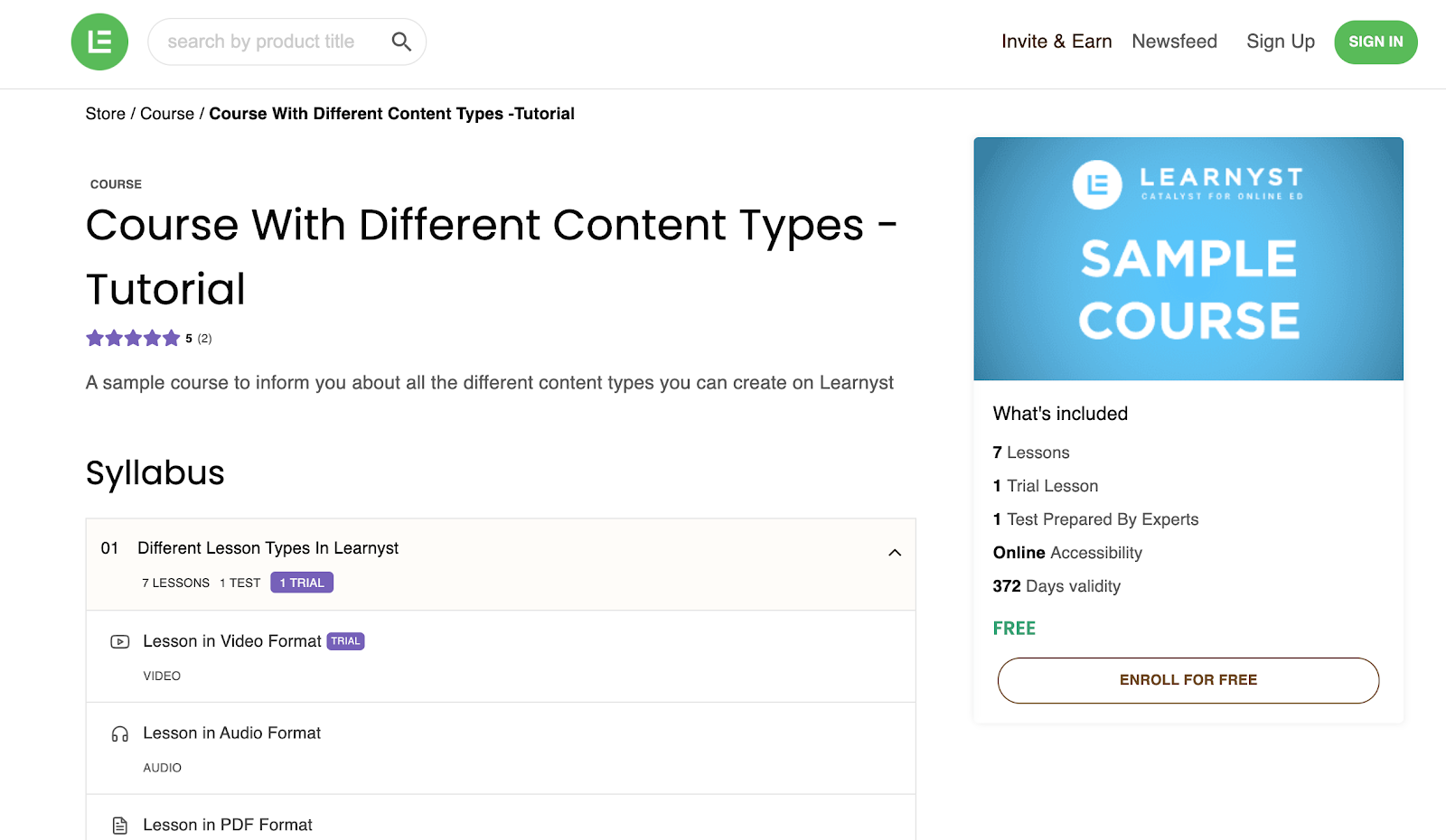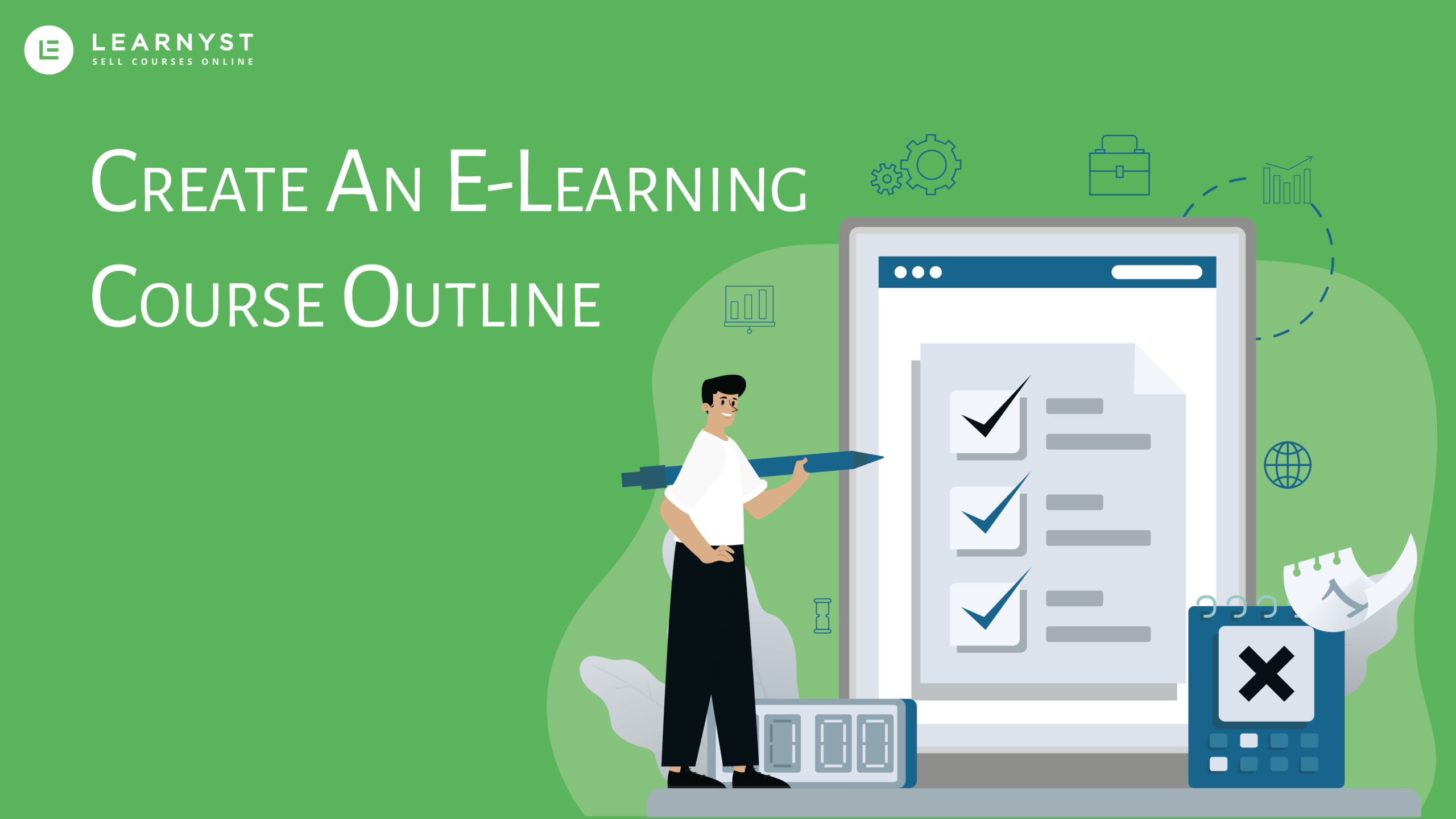eLearning Course Outline
- April 6 2021
- Vaishak
the eLearning course outline is an important component in any eLearning course. Without it, it is impossible to sell your course.
If you are trying to get a reasonably big task done, it will help a lot if you gave it an outline. Doing so enables you to focus on one thing at a time and make it as perfect as possible. The same is the case with online courses. Let’s look at what makes the ideal outline for an eLearning course.
Why create an eLearning course outline?
Not only will it help you structure your course better, but your students will also have an easier time completing your course. An outline will include all modules, lessons, topics, and sub-topics of your course. It will also lay out what kind of content you will need to create for each section.
There may be topics you want to cover, and having an outline lets you organize them in a way that will make sense to your students. It also prevents you from missing out on any critical information. As an added benefit, you can even end up with fresh ideas for your course, allowing you to create deeper and knowledge-rich content.
Other factors to consider
If video lessons are part of your course, an outline is essential. Video lessons should be as short as possible, and a written script is one way to make sure that happens. The last thing you want is for your students to lose interest in your videos because they contain too much information.
Outlining will also help with planning the lesson by leading you to search for answers to questions like:
- What are questions likely to arise from this topic?
- Will your students find these issues relatable?
- What are the prerequisites for students to take your course/courses?
You can also double the use of the outline in planning your marketing activities as a preview into what you will be presenting, thereby enticing them into enrolling for your course/courses.
The basic rules of outlining
Work backward from the end goal.
Backtracking everything from the end goal of your students can reap a lot of benefits for both parties. First, get clear on your learning goals and objectives. If you are teaching a course on pet training, you should know exactly what your students will have learned at the end of the course. Maybe they just need to teach their pet basic commands or want to know the which is the best dog health Insurance solution or perhaps they’re looking for more advanced commands and how to use a digital pet management app.
Let’s assume they just need basic commands. Then, the contents of your course must be about teaching your pet basic commands like Sit, Come. Fetch, Rollover, etc.
The fewer the steps, the merrier
For the main steps, create topics that will serve as high-level topics that you can break down into smaller lessons. The main themes of your course can be turned into modules. For example, Sit Command can be one module. This becomes one of your modules and ends up on the top level of your outline.
Your students won’t find it intimidating if the number of modules in your course is up to six. This lets students break down information into manageable bits. Break these modules into smaller lessons.
You can ideally create anywhere between 3 and 12 lessons per module. Doing so will help you determine precisely what topics you will be covering and how you can do more profound research.
If you need to go further, segment your course and use topics. Topics are necessary for complex or very comprehensive courses.
Outlining the Lessons
Modules, lessons, and topics are enough to give some sort of structure to your course. Review these and put them in the right order. Check if you’re missing anything, if the steps are in a logical order and if the lessons are within the correct modules. Also, check if you’ve included sufficient action-oriented steps. Then you can proceed to outline each individual lesson.
If you are doing a live class over Zoom, Google Meet, or other conferencing platforms, the outline may just be enough for you to review before the class goes live. If you are creating a full script, laying down an outline first will save you a lot of time when it comes to writing the script.
These shortcuts will lead to what is called rapid eLearning, the idea behind which is to use as many tools and techniques possible to create a course in less than three weeks instead of months. Within each lesson, outline the content you’ll need to cover.
- Give a small introduction to each lesson.
- Then get into the content. Think of how you can use storytelling to help students quickly digest the course.
- Wrap up with a summary of what you have taught
Keep in mind that you don’t need too many background facts for your lessons. Show your students how to approach a particular problem and quickly move on to the next. The lesson should ideally be not more than 15 minutes long.
Further Reading: How to create an online course goal and structure
Essential components of the perfect eLearning course outline
The following components are very important to explain your course and its benefits to your students. You can even add them to your sales page. Don’t drift away from the primary goal of your course. Putting everything down as an outline and revisiting them while you’re in the course creation process will help you keep track.
- Course description: This section has dual purposes. One, to sell the course to prospective students, and two, to give an overall idea about the course to students who have already enrolled. Use this section to attract and retain the right kind of students. Answer questions like what the course is about, what problems it will help learners solve, why they should take the course etc.
- Course requirements: What do you expect your students to know before taking your course? What will be required to pass the course? How will the structure of the final exam be? Make it clear to students exactly what they are signing up for or have signed up for so that they can prepare themselves and set realistic expectations about the outcomes of the course.
- Learning outcomes: What are the outcomes of learning your course? Clearly define them beforehand. Use action statements to describe it to your students. For example, “students will be able to teach pets all the basic commands like sit, fetch and come.” This will help both learners and you as it identifies a clear learning outcome.
- Course assessment plans: Assessment plans are closely related to learning objectives. While the learning objectives identify what students will learn, assessments give you and your students a clear understanding of how they have mastered those objectives. The outline is supposed to identify the types and frequency of assessments – whether the test will be weekly or will there be quizzes/written essays/ group projects etc.
- Instructional material: These are an indispensable part of your course’s outline and the course planning process. You can choose from video lessons, audio lessons, PDF documents, etc.
Here is a sample course outline in Learnyst

Introducing Learnyst
We are a company that is quick to implement all value-adding technology that comes up in the EdTech space. By leveraging our platform to create and sell online courses, educators across the country have combinedly sold over 25,000 courses and earned over INR 350 Crores. We have integrated the best course outline in all of our templates to make sure all the courses created on our platform are the best. To know more about Leanyst and what we can do for you, get in touch with us now!


Leave your thought here